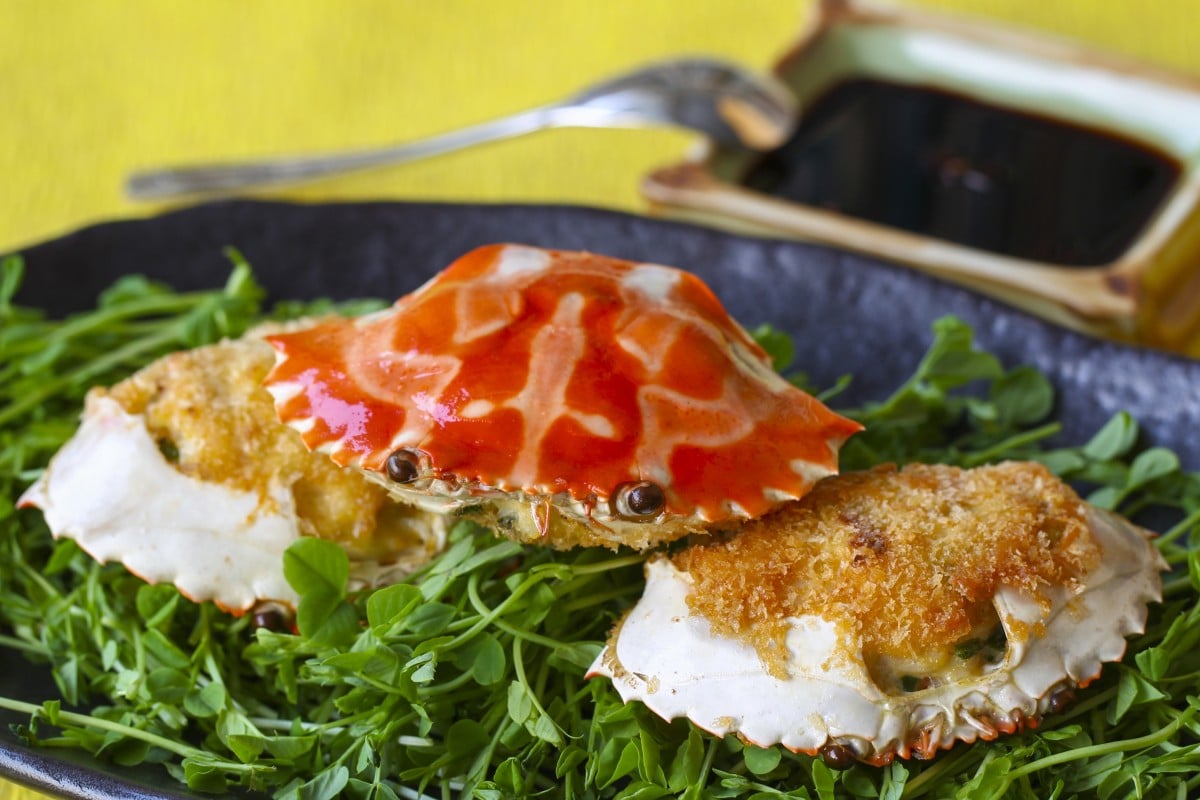
If I had to choose one type of crustacean to eat for the rest of my life, it would be crab. I love all crab dishes, even those made with the canned stuff - although fresh is so much better. This dish is a bit fiddly, as it takes a while to get all the crab meat from the shell, but the work is not difficult.
Look for crabs that are lively and heavy, and buy them on the day you're going to use them. If you want the vendor to kill the crabs for you, take them home immediately and steam them within an hour.
Kill each crab by poking a sharp metal skewer or thin-bladed knife (such as those used for boning poultry) between the eyes, into its brain. Pull off the belly flap (also called the apron) from the underside of the crab (it will be long and slender on males and bell-shaped on females).
Scrub the crabs under running water. Put a crab on its belly. Use a dish cloth to hold the claws down with one hand and, grasping the side of the back shell, pull it up and away from the body. Pour off any liquid in the back shell, making sure you're not discarding any of the flavourful crab butter (also known as the tomalley - it's orange or khaki green in colour) or the reddish-coloured roe (in female crabs only). Remove any cartilage or papery membranes within the shell.
Very briefly rinse the back shell and pour out the water. Put the four back shells, cup side-up, on a shallow plate and set them aside while preparing the bodies.
From the body portion, remove and discard the feathery gills and pull off the mouth. Remove and discard the intestines (they're tiny, white and squiggly). Cut the bodies in half and lay them on a shallow plate.
Pour water into the lower half of a tiered steamer or put a shallow rack in the base of a wok and add water so it reaches the height of the rack. Heat the water until boiling, then put the plate holding the back shells in the steamer, cover with the lid and steam for 10 minutes. Remove the plate and set aside the shells to cool. Place the plate holding the body parts in the steamer (adding more water, if necessary), cover with the lid and steam for 12 to 15 minutes.
Pour off and discard the liquid in the back shells, then scrape the tomalley (crab fat) and roe into a bowl. Rinse out the back shells then set them aside to air dry. Remove all the meat, tomalley and roe from the crab legs and bodies and add it to the bowl.
Heat 5ml (1tsp) of cooking oil in a small pan, add the finely minced shallots and cook over a low flame until soft. Add the shallot, chopped spring onion and curry powder to the crab meat, season with salt and pepper and mix thoroughly. Taste for seasonings and adjust, if necessary. Mix in the whisked egg. Pack the mixture into the back shells - it should fill them completely. At this point, you can cook the crabs immediately, or put them on a plate, cover with cling-film and refrigerate for several hours.
Heat oil to the depth of about 8cm (3in) in a wok. Coat the exposed part of the crabs with panko, pressing gently so it adheres. When the oil is hot (180°C/350°F), put the crab shells, panko side up, in the wok. The backs of the crab should be sizzling in the oil - you'll need to cook them in batches. Repeatedly ladle the hot oil over the exposed part of the crabs to brown the crabs and cook the surface.
After about four minutes, carefully turn the shells over so the panko-coated side is down, and fry for about three more minutes, or until golden brown. Carefully lift the shells from the hot oil and put them, panko-coated side down, on paper towels to drain while cooking the other crabs. Invert them before serving with Worcestershire sauce.